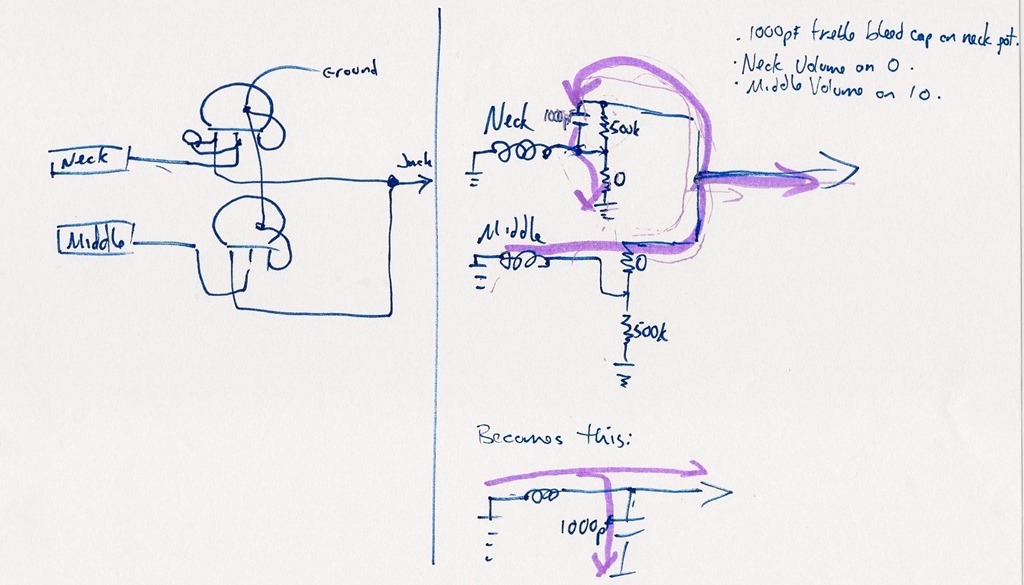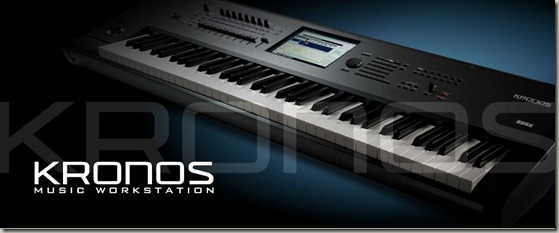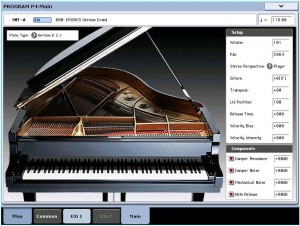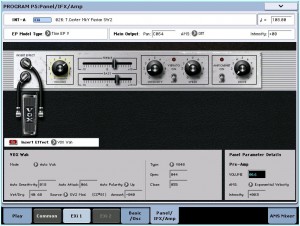
Push/Pull Pots

A push/pull pot is just a potentiometer sitting on top of a DPDT switch. The switch actuator is the shaft of the pot itself, which drives down right into the switch. When you pull the shaft up, you are moving the switch actuator to connect the top half of the switch, and when you push the shaft down, you are moving the switch actuator down to connect the bottom half of the switch. There’s no built-in electrical connection between the pot and the switch – if you want the switch to control the pot’s behavior, you need to connect up some wires (as in the example described at the end of this article).

Ideas for Treble Bleed Problems
Update: I describe my final mods in this post.
A while back, I described some problems with trying to use treble bleed on this guitar with three volume pots and a 3-way switch. When turning down one volume pot, that pickup retains brightness, but the other pickups get duller. In this diagram, with middle and neck pickups in a blended switch position, the middle volume is up full and the neck volume is turned down. The middle pickup high frequencies have a path to ground through the neck treble bleed cap. More

Difficult Decisions

I’ve tried to be clear in my posts and videos evaluating guitar electronics, that these things are really subjective and a matter of personal preference. I could tell you that I like CTS brand EP0086 500k audio taper pots for both volume and tone, and Orange Drop 715P .01uF tone capacitors, and these work really well for me. But, you may buy these same components and hate them. More
Jordan Rudess Plays the KRONOS
I just got back from the 2011 NAMM show. There was a great buzz about the KRONOS throughout the show- a really nice way to celebrate the announcement of the product.
It was truly inspiring to see and hear some great musicians playing KRONOS, including Korg’s own Steve McNally, Jack Hotop and Rich Formidoni. But the highlight for me was getting into the packed standing-room-only demo room while Jordan Rudess of Dream Theater talked about his inspirations and masterfully improvised on the KRONOS.
I captured this video on my handheld camcorder. Unfortunately it’s only using the built-in mic, so the audio isn’t great. And people kept bumping into me! But in spite of that, Jordan’s musicality and skill shine through, as do the fantastic sounds and capabilities of KRONOS. Enjoy!
I think in this picture, I was saying “sorry about that voice stealing bug we heard during your playing- I just tweaked the stealing algorithm, so it’ll be fixed in the next update!” Thankfully, he was very understanding, and was asking Rich “When can I get one? No seriously, when?”

Korg KRONOS Workstation Revealed
At long last, the KRONOS workstation is being unveiled at this year’s NAMM show. This is the successor to the acclaimed OASYS, which was released back in 2005 . As some of you may know, I work at Korg Research & Development. I’ve spent nearly 10 years (that’s a quarter of my life!) working on the technology that lives inside this beast!




